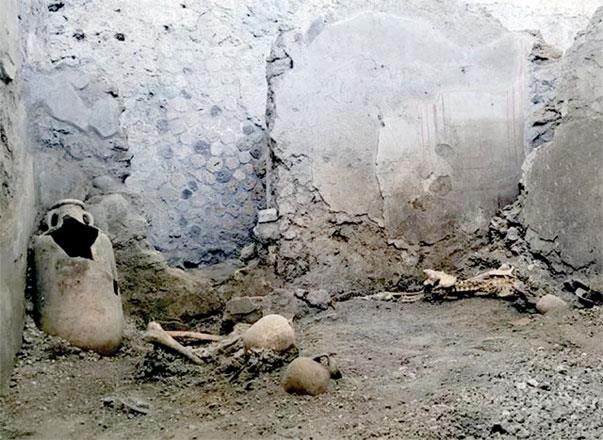Earthquakes, Not Just Volcanic Ash, A Pompeii Killer - Research
Scholars have debated for decades whether seismic activity occurred during the eruption of Vesuvius in southern Italy nearly 2,000 years ago, and not just before it, as reported by Pliny the Younger, an author and administrator in Ancient Rome, in his letters.
The article published on Thursday in the academic journal“Frontiers in Earth Science” takes a new look at the now world-famous archaeological site, arguing that one or more concurrent earthquakes were“a contributing cause of building collapse and death of the inhabitants”.
“Our conclusions suggest that the effects of the collapse of buildings triggered by syn-eruptive seismicity [seismic activity at the time of an eruption] should be regarded as an additional cause of death in the ancient Pompeii,” it said.
Archaeologists estimate that 15 to 20 per cent of Pompeii's population died in the eruption, mostly from thermal shock as a giant cloud of gases and ash covered the city.
Volcanic ash then buried the Roman city, perfectly preserving the homes, public buildings, objects and even the people until its discovery in the late 16th century.
In May 2023, archaeologists uncovered the skeletons of two men who appeared to have been killed not by heat and clouds of fiery gas and ash but from trauma due to collapsed walls - providing precious new data.
One of the victims was discovered with his left hand raised, as if to protect his head.
“It is worth noting that such traumas are analogous to those of individuals involved in modern earthquakes,” wrote the authors, who determined that the collapsed walls were not due to falling stones and debris but to seismic activity.
“In a broader view that takes into account the whole city, we consider, as a working hypothesis, that the casualties caused by seismically triggered building failures may not be limited to the two individuals,” the authors wrote.
The intersection of phenomena from both volcanic and seismic activity requires a multidisciplinary approach, the study argues, with the collaboration of both archaeologists and earth scientists.

Legal Disclaimer:
MENAFN provides the
information “as is” without warranty of any kind. We do not accept
any responsibility or liability for the accuracy, content, images,
videos, licenses, completeness, legality, or reliability of the information
contained in this article. If you have any complaints or copyright
issues related to this article, kindly contact the provider above.
Most popular stories
Market Research

- Poppy Seed Market Size, Share, In-Depth Insights, Opportunity And Forecast 2025-2033
- Daytrading Publishes New Study On The Dangers Of AI Tools Used By Traders
- Origin Summit Debuts In Seoul During KBW As Flagship Gathering On IP, AI, And The Next Era Of Blockchain-Enabled Real-World Assets
- Chicago Clearing Corporation And Taxtec Announce Strategic Partnership
- Bitmex And Tradingview Announce Trading Campaign, Offering 100,000 USDT In Rewards And More
- ROVR Releases Open Dataset To Power The Future Of Spatial AI, Robotics, And Autonomous Systems






















Comments
No comment